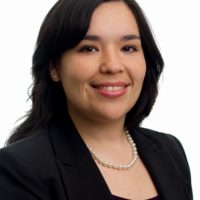Goals
- Recognize the prevalence of inequities in medicine for under-represented minorities.
- Implement solutions to promote diversity and equity in the workplace.
- Recognize the intersectionality of various under-represented groups.
- Promote Women in Medicine groups that are inclusive and speak to women of diverse backgrounds.
Objectives
- Explore the factors that contribute to the pay, recruitment and retention gaps for women of color.
- Develop comprehensive strategies to recruit, retain and promote women of color.
- Define and review examples of intersectionality and how the challenges can be overcome.
- Discuss strategies for success balanced with maintaining authenticity and identity in the workplace.
- Define microagression. Develop strategies to respond to microagressions as the receiver and bystander. Learn how to receive feedback and grow if approached about an interaction in which you were the microagressor.
Module Content
Title |
Author |
Time |
|
|---|---|---|---|
#Me_Who Anatomy of Scholastic, Leadership, and Social Isolation of Underrepresented Minority Women in Academic MedicineObjective: 1 |
Michelle A. Albert | 7 minutes |
|
|
This is a short article that reviews the current demographics of underrepresented minority women physician scientists (URMWP). The article explores the factors that contribute and provides concrete steps that organizations can take to improve recruitment and retention of URWP. |
|||
Women in the Workplace 2017Objective: 1 |
Alexis Krivkovich, Kelsey Robinson, Irina Starikova, Rachel Valentino, and Lareina Yee | 10 minutes |
|
|
Women of color face the greatest obstacles and receive the least support in attaining leadership positions. Women in the Workplace, a study conducted by LeanIn.Org and McKinsey, looks more deeply at the distinct challenges they face, shaped by the intersection of gender and race. This report hits on the highlights of the findings. |
|||
A Diversity Strategy for Academic MedicineObjective: 2 |
Yvonne Maldonado, MD | 17 minutes |
|
|
This is an overview of the past and the future for diversity and inclusion initiatives in medicine. The video explores the increasing diversity of patient populations and opportunities to provide more culturally competent healthcare. It introduces the concept on intersectionality and how groups can support each other. |
|||
The Doctor's Life: Creating More Diversity in MedicineObjective: 2 |
Dianne Ansari-Winn, MD, MP H and Vaughn Browne, MD, PhD | 45 minutes |
|
|
In this podcast, ideas about how diversity in pre-hospital, community outreach and research settings creates positive change in communities. |
|||
Why Black doctors like me are leaving faculty positions in academic medical centersObjective: 2 |
Uché Blackstock, MD | 5 minutes |
|
|
A poignant and powerful narrative of a physician's decision to leave academic medicine. She cites a toxic and oppressive work environment, along with a lack of mentorship. She also discusses how black and other minority physicians are often expected to lead diversity and inclusion efforts, often without compensation and support. |
|||
Can an Agentic Black Woman Get Ahead? The Impact of Race and Interpersonal Dominance on Perceptions of Female LeadersObjective: 3 |
Robert W. Livingston, Ashleigh Shelby Rosette, and Ella F. Washington | 10 minutes |
|
|
Prior research has demonstrated that display of agentic behaviors, such as dominance, can produce backlash against female leaders. In this study, this effect was evaluated through the lens of race. Black women did not experience backlash for these agentic behaviors as much as white women, increasing the complexity of intersectionality of race and gender in leadership. |
|||
Physician Workforce Disparities and Patient Care: A Narrative ReviewObjective: 3 |
Julie K. Silver et al | 20 minutes |
|
|
This review article examines if 4 underrepresented groups (women, under-represented minorities, LGBTQ, & physicians with disabilities) of physicians experience higher rates of burnout. The article also explores the intersectionality of these groups and potential solutions to improving workplaces for underrepresented groups. |
|||
The Urgency of IntersectionalityObjective: 3 |
Kimberlé Crenshaw | 19 minutes |
|
|
From the TedTalk Overview: "Now more than ever, it's important to look boldly at the reality of race and gender bias -- and understand how the two can combine to create even more harm. Kimberlé Crenshaw uses the term "intersectionality" to describe this phenomenon; as she says, if you're standing in the path of multiple forms of exclusion, you're likely to get hit by both. In this moving talk, she calls on us to bear witness to this reality and speak up for victims of prejudice." |
|||
AWAEM Anniversary Interviews: 10 Years of Progress – Sheryl Heron, MDObjective: 3 |
Michelle Lin, MD and Sheryl Heron, MD | 22 minutes |
|
|
Dr. Sheryl Heron is a Professor and Vice Chair of Administrative Affairs in the Department of Emergency Medicine, the Assistant Dean for Medical Education and Student Affairs on the Grady Campus and Associate Director of Education and Training for the Center for Injury Control at Emory University. She discusses her career focus on minority issues and the intersectionality of being a woman and black in medicine. She also addresses her initial resistance towards affiliating with Women in Medicine groups and how these groups have evolved to be more inclusive. |
|||
For Women of Color in Medicine, the Challenges Extend Beyond EducationObjective: 4 |
Jessica Yang | 7 minutes |
|
|
This popular media article, written by a medical student, gives a brief but comprehensive overview of the challenges for women of color getting into medicine and then beyond. |
|||
The Costs of Code-SwitchingObjective: 4 |
Courtney L. McCluney, Kathrina Robotham, Serenity Lee, Richard Smith and Myles Durkee | 15 minutes |
|
|
In this Harvard Business Review article, the authors review the issue of code-switching, or adjusting one’s style of speech, appearance, behavior, and expression in ways that will optimize the comfort of others in exchange for fair treatment, quality service, and employment opportunities. While not directly aimed at medicine, there are examples from medical practice used, and the discussion about how this occurs in medicine could be rich. Interested in a deep dive on code switching? Check out NPR's podcast, https://www.npr.org/sections/codeswitch/ |
|||
Did you really just say that?Objective: 5 |
Rebecca A. Clay | 10 minutes |
|
|
Microaggressions are often defined as "death by a thousand paper cuts," i.e. brief behaviors or statements that may or may not be intended to cause harm to the receiver. This article explores how to respond as the recipient and bystander of a microaggression. It also discusses how to respond if approached as a microaggressor. |
|||
Code Switch: Between FriendsObjective: 5 |
Anna Sale | 45 minutes |
|
|
Microaggressions among colleagues and friends are explored in this episode. The episode interviews several people from different ethinic and racial backgrounds regarding their friendships and the intersection of bias, microaggressions and how these interactions changed, ended and in some cases strengthened their identities and friendships. |
|||
Talking Points and Discussion Questions
Take the Harvard Implicit Bias test, https://implicit.harvard.edu/implicit/takeatest.html. What surprised you? With this knowledge, how will it impact your personal development?
What are the demographics of your workplace? What factors contribute to positive or negative impacts on recruitment, retention and advancement of women of color? What changes do you think could be adopted? What is the path towards implementation of these strategies?
Have you experienced micoagressions? Reflect on one particular experience. Discuss how that experience made you feel. Discuss how you responded in the moment. Explore how you would like to respond in the future.
Dive Deeper
Module Authors and Reviewers

Naomi Lawrence-Reid, MD


This is amazing! Fantastic work.